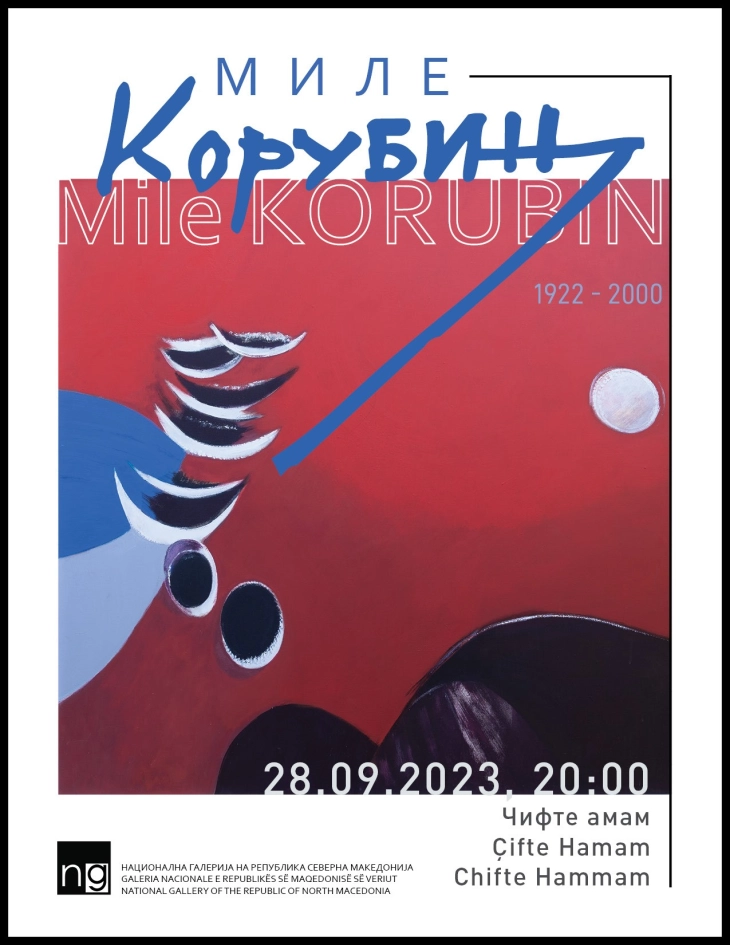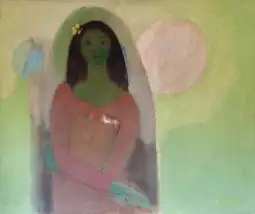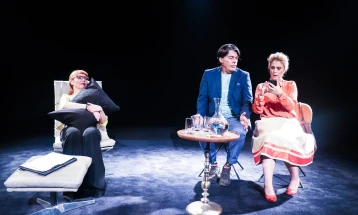Chifte Hammam sets homage to Mile Korubin
- The National Gallery's Chifte Hammam is opening on Thursday a retrospective, jubilee exhibition of Macedonian artist Mile Korubin (1922-2000). According to the National Gallery, the grand project pays homage to Korubin as part of a program celebrating the Gallery's 75th anniversary.

Skopje, 28 September 2023 (MIA) - The National Gallery's Chifte Hammam is opening on Thursday a retrospective, jubilee exhibition of Macedonian artist Mile Korubin (1922-2000). According to the National Gallery, the grand project pays homage to Korubin as part of a program celebrating the Gallery's 75th anniversary.
The National Gallery's director Dita Starova Qerimi, academic painter Rubens Korubin, and art historian Kiril Penushliski will address the opening of the exhibition.
The exhibition will run through Oct. 27, 2023, and is curated by Maja Nedelkoska Brzanova and Maja Chankulovska Mihajlovska.

"The motivation to organize an homage dedicated to Mile Korubin (born on the 28th of September 1922 in Prilep, passed away on the 13th of September 2000 in Skopje), a renown Macedonian painter, is the celebration of the centenary of his birth. These jubilees are the principal motivation for the National Gallery, as an institution that cares for the preservation and protection of part of the movable cultural heritage in our country for seven and a half decades, to continuously present the highest national cultural achievements. Onto this primary vision, mission, and function we add our commitment to provide a continuous reminder of the particular characteristics of the key legacy of the work of the great Macedonian modern painters and sculptors, through a selection and presentation of works of art located in numerous state and public institutions in the country, as well as in private collections," the National Gallery said.
Korubin belongs to the first generation of academically educated Macedonian artists who, after the Second World War, were educated in one of the centers of the Yugoslavia (Belgrade, Zagreb, Ljubljana). Namely, after the Art School opened in Skopje, he became one of its first students, studying under the bards and founders the of the Macedonian art school of thought: Nikola Martinoski, Lazar Lichenoski, Dimo Todorovski, Vasilije Popovic – Cico, and Tomo Vladimirski. Mile Korubin is also the first academically educated Macedonian artist after the Second World War, having graduated in 1951 from the Fine Arts Academy in Belgrade where was pedagogically instructed by Professor Milo Milunović, and then by Petar Lubarda and later by Mića Popović, being part of the fine art elite of Yugoslavia at the time.

"Speaking more specifically about the generational place of Mile Korubin, he, nevertheless, is how own author who, despite the challenge of the contemporary art currents, chooses his own evolutionary path and creates his own characteristic script. The contemporary art critiques confirm this and, since the beginning of his work, recognized him as an artist that goes “against the current and the comfortable surge of fashionable trends."
"A significant segment, also present in all phases of his work is sensuality, radiating from the female figures and portraits, and arises from the intimate experience of erotism as “a driving force of the human spirit”. Placed again in a lyrical, metaphysical, undefined space, these stylized and idealized female representations (portraits and acts), suggest the eternal quest for beauty, intertwining the realistic with the imaginary in the treatment of figure and of space. The figures, treated without characteristic physiognomic features, gain a mythological connotation of sorts, retelling a subtle story about the timeless archetypal notion of women. Hence, the soft rounded line forming the female body, set freely in the metaphysically colored space with broad contrasting planes, separate it from the space, thus becoming a bearing element that we follow in the subsequent phases," adds the National Gallery.
The time period of five decades of work makes Mile Korubin one of the most prolific Macedonian painters, as well as pedagogists. His reality, transformed through the artistic visions, with a specific artistic script, manifests its own logic of the “journey” from the tangible to the intangible, i.e., from a concrete reality to the abstract.
Photo: National Gallery - Chifte Hammam







